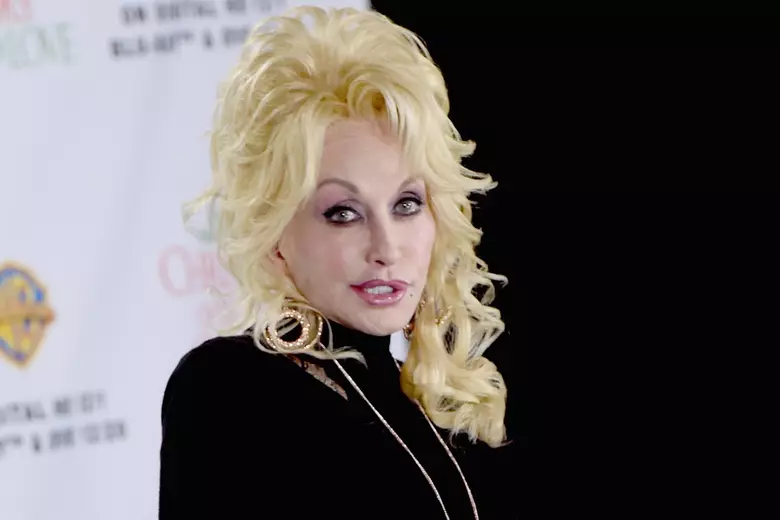Her Songs Shine With Joy, But They Were Born From Struggle—The Truth About Dolly Parton’s Early Life That Still Breaks Hearts. ML

Dolly Parton: From Dirt Floors to Global Icon, the Country Queen Who Never Forgot Her Roots
Before she became a global superstar with glittering rhinestones and a voice that defined generations, Dolly Parton was a barefoot dreamer from the Smoky Mountains of Tennessee — a little girl who learned early that survival took both grit and grace.
Born on January 19, 1946, in a one-room cabin along the Little Pigeon River in Locust Ridge, Parton entered the world under extraordinary circumstances. Delivered by country doctor Robert F. Thomas during a snowstorm, her parents could afford to pay him only with a sack of cornmeal. Decades later, Dolly would quip with her signature humor, “I’ve been raking in the dough ever since.”
That moment set the tone for a life that would blend hardship, humor, and hope in equal measure.
Growing Up in the Great Smoky Mountains

Dolly was one of twelve children, and life in the Parton household was steeped in both poverty and love. “We were dirt poor,” she’s often recalled. “No electricity, no running water.” The family’s small cabin, nestled deep in the Smokies, was crowded, cold in winter, and bursting with the sounds of laughter, faith, and music.
Food often came from the forest — wild game, fish, or whatever could be gathered — and winters tested their endurance. In one of the family’s most harrowing memories, a brutal snowstorm trapped them inside without food or heat. “We thought we were going to die,” Parton told Entertainment Tonight. Yet even then, the family’s faith sustained them.
Her mother, Avie Lee, was a deeply religious woman who sang constantly, while her father, Robert Lee Parton, worked tirelessly on tobacco farms and construction crews to feed his growing family.
A Childhood of Pain and Perseverance
The Parton children learned to be resourceful from necessity. Dolly once suffered a gruesome injury after stepping on a broken Mason jar, nearly severing three toes. With no hospital nearby — and no money even if there had been — her mother performed emergency surgery right there in the cabin. Using cornmeal to clot the bleeding and kerosene as disinfectant, she stitched Dolly’s toes back together with a sewing needle and thread.
“I still walk on them to this day,” Dolly told Dr. Oz in 2017, laughing at the memory.
But not every childhood memory could be mended so easily. When Dolly was just nine years old, her baby brother Larry died shortly after birth. She had been assigned to care for him, and when he passed, she carried the guilt for years. “It crushed me,” she later admitted. “I had already made a connection.”
Those experiences of loss and survival would later find their way into her songs — ballads that blended raw honesty with boundless empathy.

Dreams Bigger Than the Mountains
Even amid hardship, music became Dolly’s refuge. Encouraged by her mother’s hymns and mountain lullabies, she began writing songs as soon as she could hold a pencil. She performed at local fairs and church gatherings, her voice carrying through the hollers of East Tennessee long before it ever echoed across the world.
Her father, though unable to read or write, instilled in her an unshakable work ethic. “Daddy couldn’t read, but he was the smartest man I ever knew,” she once said. His struggle with literacy later inspired one of Dolly’s proudest legacies — the Imagination Library, a book-gifting program she launched in 1995 to promote early childhood reading.
“It was for my Daddy,” she told People. “He never had a chance to learn to read, but I wanted to make sure other children would.” Today, the program has mailed over 230 million books to children worldwide, turning a daughter’s love into a global movement.
From the Cabin to Country Royalty
Dolly’s rise from a dirt-floor cabin to the stages of the Grand Ole Opry and beyond is one of the most remarkable stories in entertainment history. She arrived in Nashville at 18 with little more than a suitcase and a notebook full of songs — and within a few years, her talent was undeniable. Hits like “Jolene,” “Coat of Many Colors,” and “9 to 5” transformed her into an international icon.
Yet, despite her success, she never distanced herself from her Appalachian roots. Her stories — woven with humility, humor, and humanity — have always pointed back to where she began.
“You can’t ever completely leave home,” she once said. “It’s the foundation of who you are.”
Still the Same Dolly
Now in her late seventies and worth an estimated $650 million, Dolly Parton remains one of the most beloved figures in American culture — a singer, songwriter, philanthropist, and business mogul who still signs every check for her employees and answers fan letters by hand.
Her journey from the Smoky Mountains to global superstardom is often told as a fairy tale, but it’s really a story of perseverance, faith, and heart.
Because long before she was a legend, Dolly Parton was proof that poverty can’t limit purpose — and that sometimes, the strongest roots grow in the hardest ground.




